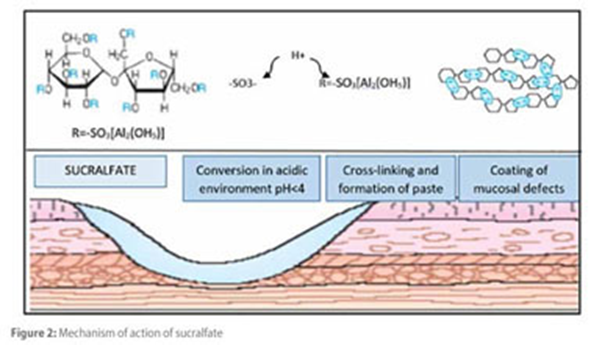The nurse has taught a patient about sucralfate (Carafate). Which statement indicates that the patient requires further teaching?
"I need to increase my fluid intake."
"I need to report pain or vomiting of blood."
"I need to take Carafate 30 minutes after meals."
"I need to take Maalox 30 minutes before or after Carafate."
The Correct Answer is C
A. "I need to increase my fluid intake." - This is a correct statement. Sucralfate should be taken with plenty of water to ensure proper absorption and effectiveness.
B. "I need to report pain or vomiting of blood." - This is also a correct statement. Severe abdominal pain or vomiting of blood may indicate a serious issue and should be reported to the healthcare provider.
C. "I need to take Carafate 30 minutes after meals." - This is an incorrect statement. Sucralfate is typically taken on an empty stomach, about 1 hour before meals and at bedtime.
D. "I need to take Maalox 30 minutes before or after Carafate." - This statement is correct. Antacids like Maalox can interfere with the absorption of sucralfate. It's generally recommended to space them apart, taking sucralfate at least 30 minutes before or after antacids.

Nursing Test Bank
Naxlex Comprehensive Predictor Exams
Related Questions
Correct Answer is ["C","D","E"]
Explanation
A. Decreasing physical activity: This is not a helpful intervention for preventing constipation. Physical activity, such as regular exercise, is beneficial for promoting bowel regularity.
B. Decreasing fluid intake: This is not a helpful intervention for preventing constipation. An adequate fluid intake is crucial for maintaining bowel regularity.
C. Nutritional diet high in fiber: This is a correct choice. Consuming a diet rich in fiber helps add bulk to the stool and promotes regular bowel movements, preventing constipation.
D. Increasing fluid intake: This is a correct choice. Staying well-hydrated is important for maintaining bowel regularity. Fluids help soften the stool and aid in its passage.
E. Increasing daily activity: This is a correct choice. Regular physical activity helps stimulate bowel movements and can contribute to preventing constipation.
Correct Answer is ["40"]
Explanation
To calculate the dosage of docusate sodium (Colace) for a 10-year-old child, we need to divide the total amount of medication by the number of doses. The total amount of medication is 120 mg/day, and the number of doses is 3. Therefore, we can use the following formula:
Dosage per dose = Total amount / Number of doses
Dosage per dose = 120 mg / 3
Dosage per dose = 40 mg
The child will receive 40 mg of docusate sodium (Colace) per dose, three times a day.
Whether you are a student looking to ace your exams or a practicing nurse seeking to enhance your expertise , our nursing education contents will empower you with the confidence and competence to make a difference in the lives of patients and become a respected leader in the healthcare field.
Visit Naxlex, invest in your future and unlock endless possibilities with our unparalleled nursing education contents today
Report Wrong Answer on the Current Question
Do you disagree with the answer? If yes, what is your expected answer? Explain.
Kindly be descriptive with the issue you are facing.
